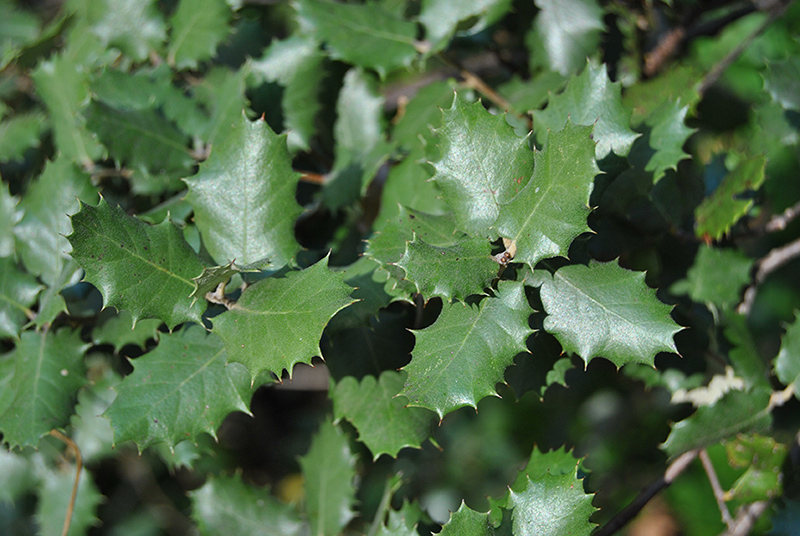
Kermes Oak
Quercus coccifera
Family and description
From the Fagaceae family, the kermes oak is a shrubby oak that can reach an arboreal height of up to 9 m. It is evergreen, with a thickly branched canopy from ground level. The trunk is tortuous, short and graysh.
Very similar to holm oaks, it has simple, alternate, ovate, coriaceous, shiny and glaucous leaves, hairless on the underside but with thorns on the edges.
Flowering occurs between April and May. The flowers are very small, yellow and hang off the end of the twigs, in numerous groups.
The fruit is an ovate-lanceolate acorn with a dome covered with imbricate scales and it appears in August of the year following flowering.
Origin and habitat
Originally from southern Europe, this shrub is spontaneous throughout the Mediterranean region.
Its habitat is characterized by dry and stony soils, with a preference for limestone although it may also occur on other substrates. Over limestone, it usually forms a dense bush or scrubland where it is usually the dominant species.
Uses and curiosities
In areas where it is spontaneous, the kermes oak is widely used to form partitioning hedges between agricultural lands and is an excellent shelter for wild fauna whose activity is beneficial to agriculture, including some insectivorous birds.
The acorns are bitterer than those of the other Quercus species. They are, however, an important source of food for wild fauna and can also be used to feed pigs and goats.
This species is especially resistant to drought, pollution and even repeated fires or intense grazing, as its dense and thick roots burst into growth easily after destruction of the aerial part of the plant.
Hybrids between the kermes oak and the holm oak can occur.